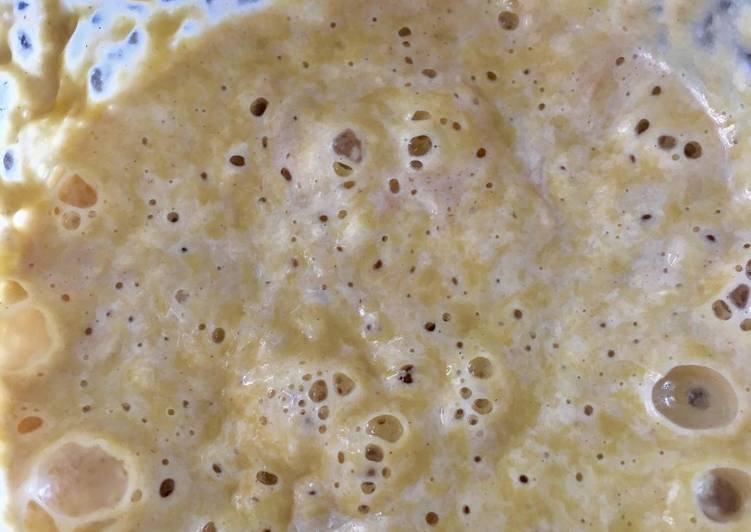Sourdough Starter Using Apple. Sourdough Starter It is important to have an organic apple, free of chemicals, for this, or the starter may not ferment. I like to use a Cox, but any organic apple will do. In the jar combine the flour, apple and water.
 The title of the Meetup was "Apple of my Hike". This article will go over the step-by-step process to transform three simple ingredients - water, flour, and apple - into an active and bubbly sourdough starter to get you on your way. Stir well until all the flour is. "While trying to use up some excess sourdough starter, I developed this recipe," says HARDINGAGGIES. "The scones come out really tender and moist and my kids love the cinnamon-y taste from the apple pie spice." Making sourdough bread with a starter will take longer to rise when compared to using a commercial yeast, but the results are well worth it. You can have Sourdough Starter Using Apple using 13 ingredients and 5 steps. Here is how you achieve that.
The title of the Meetup was "Apple of my Hike". This article will go over the step-by-step process to transform three simple ingredients - water, flour, and apple - into an active and bubbly sourdough starter to get you on your way. Stir well until all the flour is. "While trying to use up some excess sourdough starter, I developed this recipe," says HARDINGAGGIES. "The scones come out really tender and moist and my kids love the cinnamon-y taste from the apple pie spice." Making sourdough bread with a starter will take longer to rise when compared to using a commercial yeast, but the results are well worth it. You can have Sourdough Starter Using Apple using 13 ingredients and 5 steps. Here is how you achieve that.
Ingredients of Sourdough Starter Using Apple
- Prepare of [DAY 1].
- It's 150 g of Bread Flour.
- Prepare 1 of Apple- Grated (avoid the core).
- You need 100 ml of Warm Water.
- It's of [DAY 3].
- It's 50 g of Bread Flour.
- Prepare 50 ml of Warm Water.
- You need of [DAY 4].
- You need 75 g of Bread Flour.
- It's 50 ml of Warm Water.
- You need of [DAY 5].
- It's 100 g of Bread Flour.
- You need 50 ml of Warm Water.
Plus you can use that sourdough starter discard to create more delicious recipes. Sourdough apple bread is versatile and can be made with either fresh apples, frozen or canned. During fall apple harvest it's great to make this recipe with fresh apples. Mix the apple cider, egg, sourdough starter, and sugar together.
Sourdough Starter Using Apple instructions
- In the jar combine the flour, apple and water. Mark the outside of the jar with a pen, so you can see what level the starer is at initially. Place the jar in a warm place, on a plate (in case there's an explosion!).
- By the 3rd day you should have seen your starter bubble and fizz, the marker you've drawn should show you how much it has. Remove about 2 tablespoons from the starter, then add the flour and water. Mix to combine. Draw a new marker at the starters new place and put back in its warm spot..
- Repeat the discard and feeding, like you did on day 2. The starter should smell fermented, but a bit sweet. If it smells of vinegar it's gone too far. You should discard most of the starter and add about 100g of flour and water to try to bring it back to a good level..
- Over the next days repeat the discard and feeding. At this stage it can be brought out of it's warm spot, especially if it's too lively. There might be some liquid on the surface of the starter, this is called hooch and can be stirred back into it. Hooch means the starter is hungry and needs more flour!.
- After a week the starter should be strong enough to use in recipes. Keep the jar clean by scraping the inside of it down with a rubber spatula. It can be kept in the fridge, as this reduces the amount of feedings it needs (one every 3-4 days.).
Feed the starter as usual, several hours before you plant to use it. If you are new to starters I have a post about sourdough starter. Sourdough Starter It is important to have an organic apple, free of chemicals, for this, or the starter may not ferment. I like to use a Cox, but any organic apple will do. Start baking sourdough bread at home with a new yeast starter!